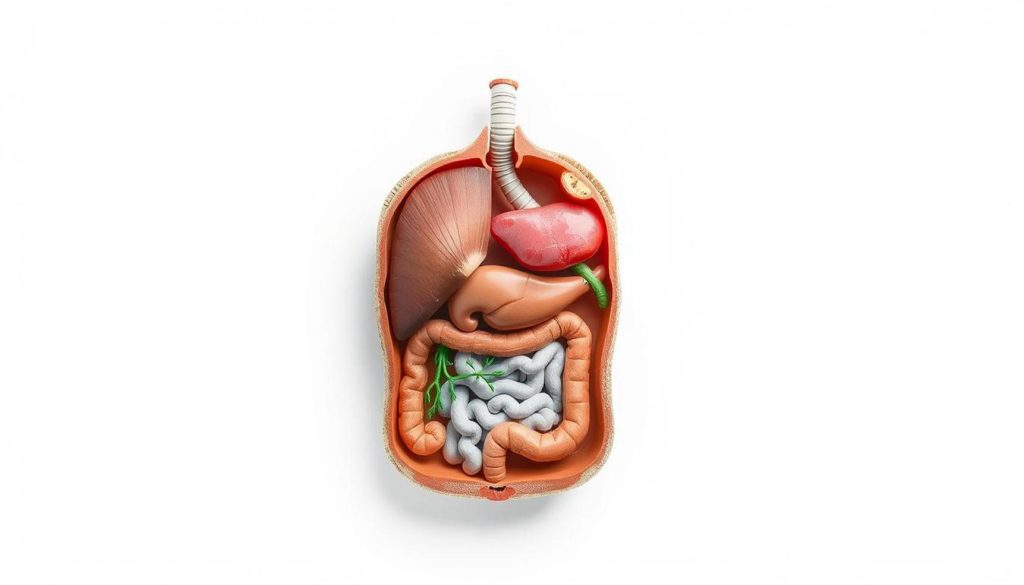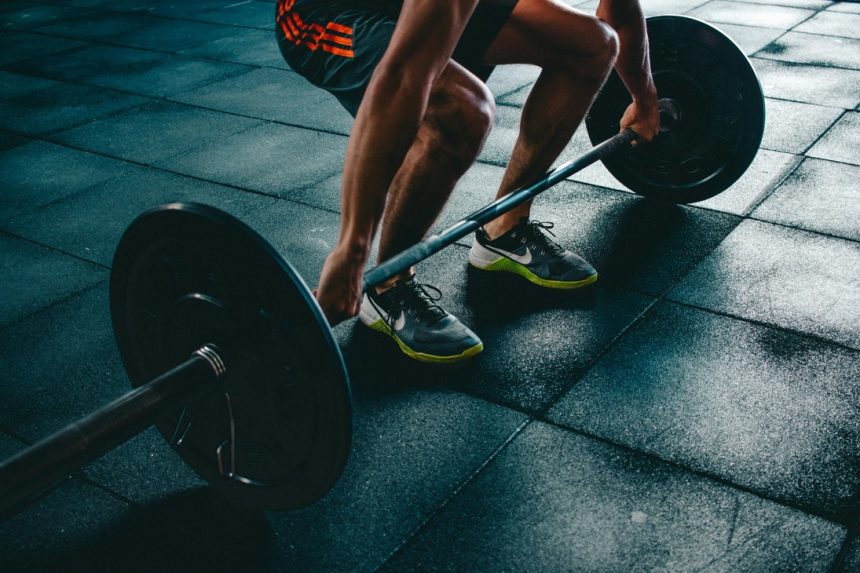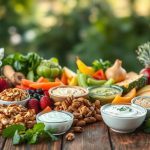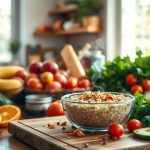Weight Loss And Workout Plan Tired of trying various fad diets and exercise routines that promise fast results yet realistically produce little or no results?
Weight Loss And Workout Plan
Weight Loss Program: Achieving Success with a Complete Plan
Tired of trying various fad diets and exercise routines that promise fast results yet realistically produce little or no results? We understand the struggle of wanting a fitness transformation yet having no idea where to start.
Our overall weight loss and workout plan will help you establish healthy eating and workable exercise habits. This will enable you to reach your goals. We put you in control of your health and wellbeing by combining a balanced diet with regular physical activity.
Read More: What Foods Speed Up Female Metabolism

Key Takeaways
Develop a personalized weight loss and workout plan
Learn how to keep healthy eating habits in place.
Find an exercise that will fit your life and that is sustainable.
Let us help you achieve a successful fitness transformation.
Improve your general health and wellbeing
Understanding the Science Behind Effective Weight Loss
Losing weight is not just about slashing calories; rather, it’s all about balancing the hormonal intelligence regulating metabolism and fat storage. If you want to lose weight quickly while being able to sustain it, you’ve got to understand how your body works.
How Your Body Burns Fat
If you are taking in fewer calories than your body is burning, a deficit is created. In this case, the body will begin to take fat from storage and use it for energy.
The Caloric Deficit Principle
A caloric deficit is vital in weight loss. It is about consuming less than your body uses so that it can burn off stored fat.
Fat Storage and Utilization
Your body stores fat in adipose tissue, from which it releases fatty acids into the bloodstream when energy is required.
The Role of Metabolism in Weight Management
Your resting metabolic rate is a determinant of how many calories you burn at rest. Therefore, knowing the metabolic rate helps in adjusting both physical activity and diet.
Factors Affecting Metabolic Rate
Your metabolic rate is greatly influenced by age, genetics, and muscle mass.
Boosting Your Metabolism Naturally
Building up extra muscle by lifting weights and consuming protein-based foods increases your metabolism.
Setting Realistic Weight Loss Goals
Your weight loss journey should start with realistic goals that match your lifestyle and fitness dreams. This will ensure that your goals are reachable and can be sustained.
Determining Your Ideal Weight Range
To realistically set goals, first determine your ideal weight range. Consider height, body type, and health. See a physician to get an individualized idea of a healthy weight range for you.
Creating SMART Fitness Goals
Most importantly, one should set SMART (Specific, Measurable, Achievable, Relevant, Time-bound) exercise goals. For example, it is better to aim at losing 1-2 pounds a week than attempting to lose so much weight quickly.
Establishing a Realistic Timeline
Set a realistic timeline for your weight loss. Break down big goals into smaller, easier steps.
Short-term vs. Long-term Goals
Knowing the difference between short-term and long-term goals helps. Short-term goals give you quick motivation. Long-term goals keep you focused on your ultimate goal.
Celebrating Milestones Along the Way
Read More: How To Increase Metabolism
The key to staying motivated is celebrating your wins. Whether it’s a new workout record or a weight loss milestone, it keeps you going.
Goal Type
Description
Example
Short-run
Immediate objectives that provide motivation
Losing 5 pounds in the coming month
Long-term
Overall objectives given to follow at the gym.
Reaching a healthy weight range within 6 months
Nutrition Fundamentals for Weight Loss
Effective weight loss begins with an understanding of the basics of nutrition. Good nutrition helps attain weight loss and enhances health. Let’s discuss the important points of nutrition to successfully manage weight.
Calculating Your Daily Caloric Needs
To lose weight, we have to eat fewer calories than we burn. The first thing we need to do is calculate how many calories we need every day.
BMR and TDEE Calculations
The key is our Basal Metabolic Rate and Total Daily Energy Expenditure. BMR describes the calories that a person’s body needs at rest. TDEE also includes those calories one needs for everyday activities. Online calculators or your healthcare professional will help in finding these values.
Creating a Sustainable Deficit
After finding our TDEE, we can eat fewer calories to lose weight. If we want to lose about 1 pound a week, we can reduce our intake by 500 calories each day.
Macronutrient Balance for Optimal Results
A balanced diet has the right mix of proteins, fats, and carbs. Each plays an important role in our body’s functions and in weight loss.
Protein Needs for Muscle Preservation
Protein is essential in maintaining muscles during weight loss. We need to consume 0.8-1 gram of protein for every pound of body weight per day.
Healthy Fats and Their Role
Healthy fats, such as those in nuts and seeds and avocados, are crucial to hormones and health. The goal for healthy fat consumption is 20-30 percent of daily calories.
Complex Carbohydrates vs. Simple Sugars
Complex carbs, such as those from whole grains, will provide enduring energy. Simple sugars cause crashing and weight gain. We need to choose unprocessed whole foods when consuming carbohydrates.
Foods to Include and Exclude
Successful weight loss requires smart food choices. We must focus on nutrient-dense foods that keep us full, and avoid foods that are diet saboteurs.
Nutrient-Dense Options for Satiety
Foods with a high fiber and protein content, such as lean meats, vegetables, and whole grains, make us feel full. This fills our stomachs and makes dieting easier.
Common Diet Saboteurs
Processed foods, sugary drinks, and high-calorie snacks can stop our weight loss. Knowing these common diet traps helps us make better choices.
Knowing and applying these nutrition fundamentals let us devise a diet that assists in weight loss while improving our health.
Designing Your Personalized Weight Loss And Workout Plan
The first way to a healthier you is by creating a personalized weight loss and workout schedule. Everyone is different, and so are the needs when it comes to fitness. A good plan considers your fitness level, goals, and what you like.
Assessing Your Current Fitness Level
Before beginning any workout, it is very important to know one’s level of fitness. This includes heart health, strength, flexibility, and shape. Getting a full check-up from a doctor or a fitness trainer is a good idea.
Choosing Activities You Will Actually Enjoy
It is important to choose exercises that you like since such a decision will help you stay motivated. When you find activities that fit your lifestyle and your likings, it will be much easier to exercise.
Finding Your Exercise Personality
Do you love team sports or prefer solo activities? Knowing your exercise personality helps pick the right workouts for you.
Variety for Sustained Motivation
Adding variety to your workouts keeps them interesting and prevents boredom. Mix cardio, strength training, and flexibility exercises.
Balancing Cardio and Strength Training
A good workout plan should mix cardio and strength training. Cardio is great for burning calories, while strength training helps build muscles and increases metabolism.
Cardio: Running, cycling, swimming
Strength Training: Weightlifting, bodyweight exercises, resistance band exercises
Creating a Weekly Schedule
After picking your activities, create a weekly schedule. It should balance cardio, strength training, and rest days.
Sample Beginner Plan
Beginners should begin with 3 days of workouts per week. Try to fit in at least one rest day between each session.
Sample Intermediate Plan
You can aim for 4-5 days a week for intermediate learners. Mix cardio with strength training exercises.
You can create a personalized weight loss plan, based on your needs, to help you reach your fitness goals by following the next steps.
Effective Cardio Workouts to Burn Maximum Fat.
Cardio exercises are significant in burning fat and improving heart health. They create a calorie deficit, accelerate metabolism to burn fat, and thus help in weight loss.
HIIT Workout Routines
HIIT is one of the most calorie-burning forms of training that improves heart health. It includes quick, intense workouts with small breaks.
Read More: Fat Burning Foods For Belly Fat
Increases metabolism for several hours following exercise
Improves cardiovascular health
Increases fat burning
20-Minute HIIT Workout Example
You can include 30 seconds of burpees and 30 seconds of rest in a 20-minute HIIT workout. This workout is effective and can be modified to suit your fitness level.
Equipment-Free HIIT Options
What’s great about HIIT is that there’s no equipment involved, so you can do jumping jacks, mountain climbers, and squat jumps anywhere.
Steady-State Cardio Benefits
Steady-state cardio keeps a steady intensity for a longer time. That is great for heart health and fat loss.
Finding Your Optimal Heart Rate Zone
To get the most out of steady-state cardio, find your heart rate zone. This is usually between 50-70% of max heart rate.
Best Forms of Steady-State Cardio
Great options for steady-state cardio include jogging, cycling, and swimming. These are easily integrated into one’s daily schedule and are quite enjoyable.
Combining Both Approaches for Optimal Results
The optimal way of burning fat involves mixing HIIT with some steady-state cardio. This combination keeps things interesting and keeps you from getting stuck in a rut.
In summary, incorporating both HIIT and steady-state cardio into one’s routine is quite a holistic approach to weight loss.
Body Transformation through Strength Training
The key to a good exercise plan is strength training. It increases muscle mass, speeds up your metabolism, and it firms your body. Adding strength training to an existing routine can make quite a big difference.
Essential Exercises for Full Body Toning
To develop your body, practice exercises that improve different groups of muscles. Include big movements and specific exercises.
Compound Movements for Maximum Efficiency
Compound exercises like squats, deadlifts, and bench presses work many muscles at once. They are effective for building overall strength. Make them a main part of your workout.
Target Exercises for Problem Areas
Also, there are specific exercises for certain areas; for example, bicep curls for arms and lunges for strengthening the legs.
Proper Form and Technique Guidelines
It is necessary to keep the proper form and technique. It helps prevent injuries and further enhances the effectiveness of exercises. Learn proper postures, movements, and breathing.
Common Mistakes to Avoid
Don’t use too much weight, don’t skip proper warm-ups, and fully engage your muscles. Knowing these mistakes helps improve your routine.
When to Seek Professional Guidance
If you’re a beginner or unsure about your form, consider consulting with a fitness professional. They’ll provide personalized tips and assist you in developing an efficient exercise plan.
Progressive Overload: The Key to Continued Results
By progressive overload, understand gradually increasing the weight or resistance; this is done by adding weight, reps, or reducing rest time, and it’s very important for further progress.
Increasing Weight vs. Repetitions
Either increasing weight or reps works; that depends on your goals in fitness.
Signs You’re Ready to Move On
When you can easily do your current routine and feel not challenged, it is time to progress. Adjust your routine to keep improving.
Exercise Type
Examples
Benefits
Compound Exercises
Squats, Deadlifts, Bench Presses
Maximum efficiency, overall strength
Targeted Exercises
Bicep Curls, Lunges, Leg Press
Targets specific muscle groups, firms troublesome areas
Meal Planning and Preparation Strategies
Meal planning and preparation are the fundamentals of any weight loss plan. Controlling what you eat supports your body with the right fuel and aids in achieving your weight loss goal.
Creating a Sustainable Meal Plan
Your dietary needs and preferences should take center stage in making up a meal plan. Choose foods that you like and help to fill you up. A good meal plan is balanced, varied, and easy to follow.
Sample 7-Day Meal Plan
A 7-day meal plan can get you started. For instance, for the whole week, you will eat oatmeal with fruits in the morning, salads with grilled chicken for lunch, and baked salmon with veggies for dinner.
Portion Control Techniques
Keep portion sizes under control to maintain a healthy diet. Use measuring cups or a food scale to measure ideal quantities. Eat slowly and avoid overeating; stop when you are satisfied, not full.
Grocery Shopping Tips for Success
Grocery shopping is a major part of meal planning. Make a list off of your meal plan and keep to it. This can help you avoid impulse buys that can be damaging to a diet.
Building a Healthy Shopping List
Base your shopping list on more whole foods when making it. Include fruits, veggies, lean proteins, and whole grains in your diet. Avoid sugary and processed foods that may hinder your weight loss rate.
Food Label Navigation Tips
Understanding food labels is key to making good choices. Look for products with fewer ingredients. Beware of added sugars, sodium, and unhealthy fats.
Batch Cooking and Meal Prep Techniques
Batch cooking and meal preparation involve saving time while having healthy meals ready at all times. Cook large batches of ingredients such as rice or quinoa, or prepare meals that can be reheated.
Time-Saving Preparation Methods
Read More: High-protein weight loss
Save time by preparing simple meals using grilling, roasting, or one-pot methods. These methods quickly cook meals without sacrificing much of their nutritional value.
Storage Solutions for Freshness
Proper storage keeps your prepped meals fresh. Store food in airtight containers and keep your fridge organized. This helps to keep your meals fresh and ready for consumption.
Meal Prep Tip
Benefit
Example
Batch Cooking
Saves time during the week
Cooking a large batch of chicken on Sunday
Portion Control
Helps to maintain good nutrition
Dividing cooked meals into individual portions
Grocery List
Ensures you have the necessary ingredients.
Making a list based on your meal plan
Tracking Your Progress and Adjusting Your Approach
It means a lot to watch ourselves to see what is going right or wrong. Monitoring our weight changes efficiently and adjusting accordingly will help us attain the desired targets regarding weight reduction.
Effective Metrics Beyond the Scale
While the scale tells us something, it isn’t everything. There are other signs of health and fitness that also should be considered.
Body Measurements and Composition
Body measurements and composition make us observe the actual changes. That shows how our fat and muscle are shifting.
Non-Physical Indicators of Success
Read More: Exercise To Reduce Belly Fat

Another big win is feeling more energetic and better mentally. These show that, actually, our weight loss plan is working in many ways.
Using Technology to Monitor Your Journey
Technology really helps in tracking our journey. Apps and devices keep us informed and motivated.
Recommended Apps and Devices
There are a lot of applications and gadgets out there that track workouts, food, and health, and indicate our progress.
Accountability Systems Creation
Accountability systems keep us on course: regular meetings with a fitness buddy or coach keep us motivated.
When and How to Adjust Your Plan
Knowing when to change our plan is important. When we level off, it’s time to go back to the drawing board, reassess, and make changes.
Overcoming Common Weight Loss Plateaus and Challenges
Plateaus in weight loss are normal along the journey. Knowing why they happen can help you get past them. When you’re making progress, it’s easy to stay motivated. But if you hit a plateau, that can be tough. With the right strategies, you will be able to break through and keep moving towards your goals.
Understanding Why Plateaus Happen
Plateaus occur for several reasons. Two main reasons are metabolic adaptation and hidden calorie sources.
Metabolic Adaptation Explained
As the weight is lost, metabolism slows down. This is a natural response to losing weight. It makes further weight loss more difficult.
Hidden Sources of Calories
People often underestimate the calories in snacks, condiments, and beverages. These are the hidden sources that largely affect your weight loss progress.
Mental Strategies for Staying Motivated
A plateau can only be worked through with motivation. Mindfulness and building a network of support are helpful techniques.
Mindfulness and Emotional Eating
Mindfulness actually helps to understand and manage emotional eating, thus avoiding extra calorie intake.
Building a Support Network
Having a supportive community or an accountability partner is important. They’ll be there to motivate you through it.
Physical Techniques to Restart Progress
Bringing change into your physical routine can help you overcome plateaus. Consider strategic re-feed days and workout variation techniques.
Strategic Refeed Days
Incorporating refeed days into your diet can increase your metabolism and help you break through plateaus.
Workout Variation Techniques
Progress restarts if you have changed your workout routine by adding different exercises or intensities.
Having understood the causes of the plateaus and applying these strategies, you can overcome the challenges of plateaus. This way, achievement of your weight loss goals will be possible.
Conclusion: Maintenance of Your Results for Lifetime Health
Reaching your weight loss goal is only the beginning. Maintaining weight loss is a lifelong process that demands commitment to a healthy lifestyle. You can sustain your weight loss outcome with a balanced life and live a healthy life forever.
We’ve discussed nutrition, exercise, and how to track your progress. Now, it’s time to make these habits part of your everyday life. By following this method, you will manage not only your weight but also improve your health in general.
It’s all about keeping weight off by building a good relationship with food and exercise. It is about making choices that will benefit your health, not strict diets or hard workouts. By focusing on progress, not perfection, you’re more likely to stick with your healthy habits, which will create a lifelong commitment to your health.
Rea More: How To Slow Down Metabolism
FAQ
What’s a good weight loss and work out plan?
The best kind of exercise is one that suits your needs and your goals. It needs to incorporate healthy nutrition and regular physical activity. You’re aiming for a mix of diet and workout that involves cardio, strength training, and flexibility.
How do I create a personalized fitness plan?
To plan, first know your present fitness level and set a goal. Select activities that you enjoy and pay attention to your schedule and lifestyle. Our features on assessing your fitness and how to create a weekly schedule have some helpful tips.
Which exercises are ideal for weight loss?
The best exercises burn calories, build muscle, and improve heart health. Combine cardio like running or cycling with strength training like weightlifting. Yet another highly effective method is HIIT.
How do I stay motivated to exercise and lose weight?
Set realistic goals and watch your progress toward them. Participate in activities that bring you enjoyment. Utilize technology to track your journey and celebrate your successes. Mix it up to stay interested and motivated.
What are some healthy meal prep tips?
Healthy meal prep involves meal planning, purchasing nutritious ingredients, and cooking meals ahead of time. Plan a meal and use portion control in a way that is maintainable for you. Our grocery shopping and meal preparation tips will help you to eat healthily.
How often should I adjust my weight loss plan?Adjust your plan on a regular basis according to the changes in your progress toward your goals. Monitor your progress; adjust it as necessary. This may mean adjusting the diet or workout routine.
What are some successful weight loss strategies?
Create a caloric deficit; eat a balanced diet; regularly exercise. Keep yourself hydrated, sleep properly, and cope with stress. You may also refer to tips on how to overcome challenges with weight loss.
Stick to your new health habits over the long term. Continue eating well, exercising, and tracking your progress. Follow our tips to help you maintain your success for long-term weight loss.










